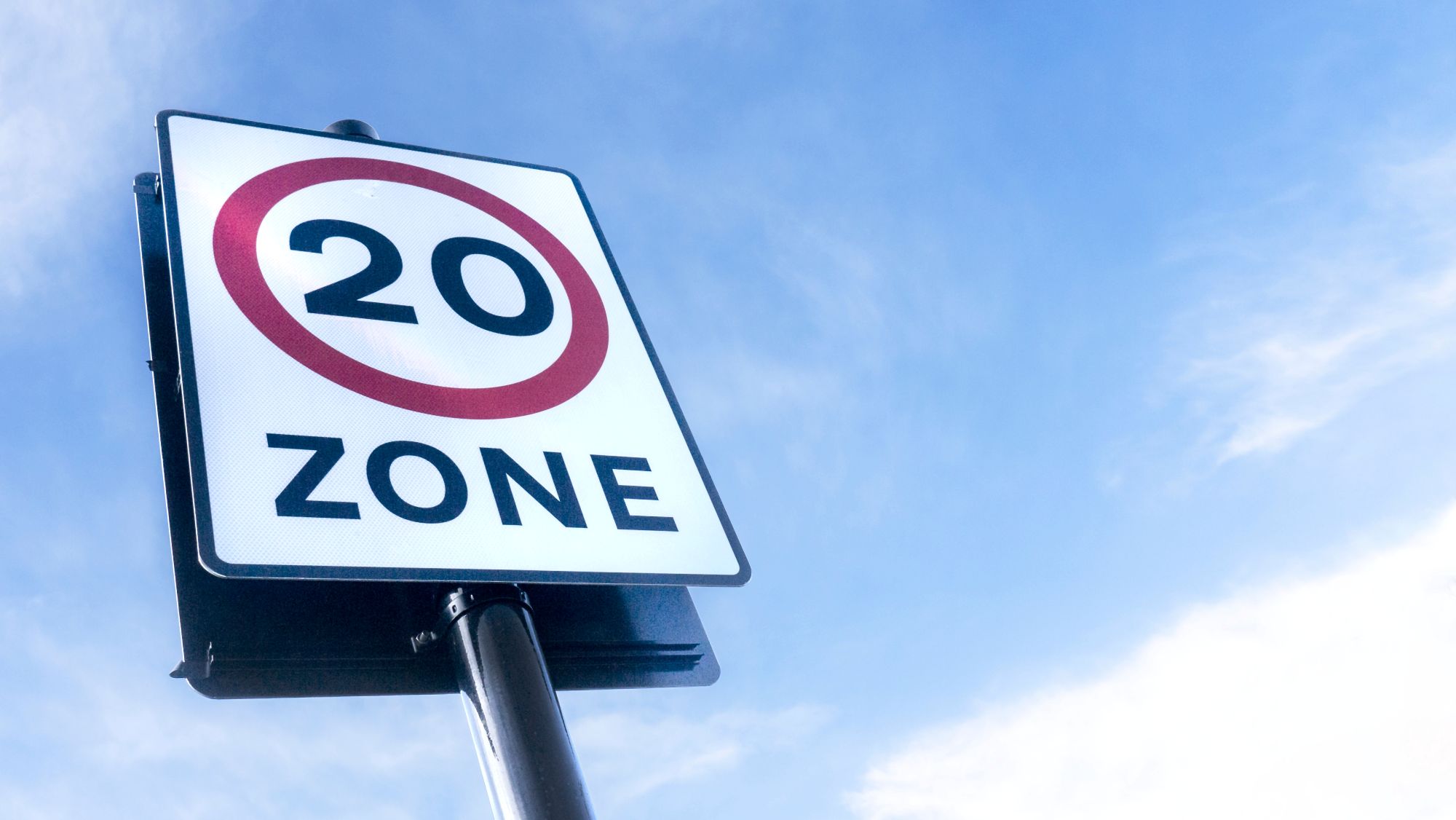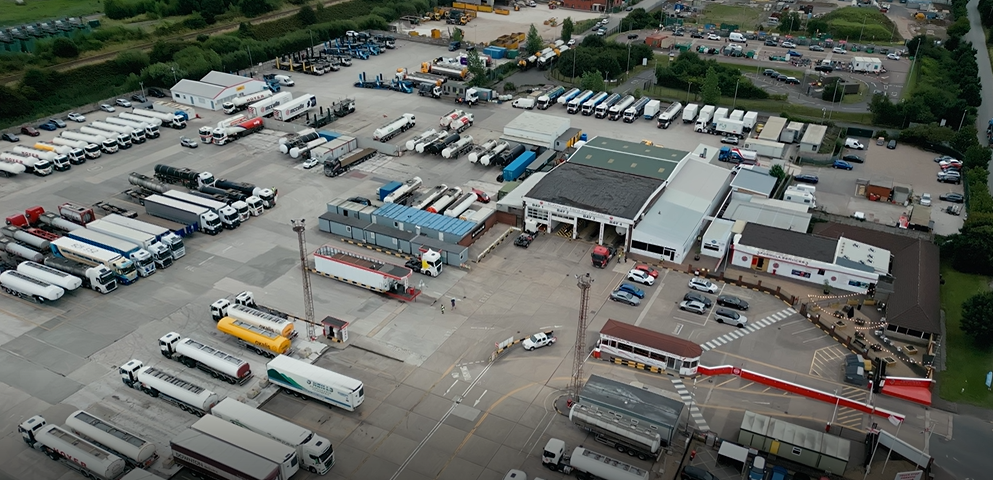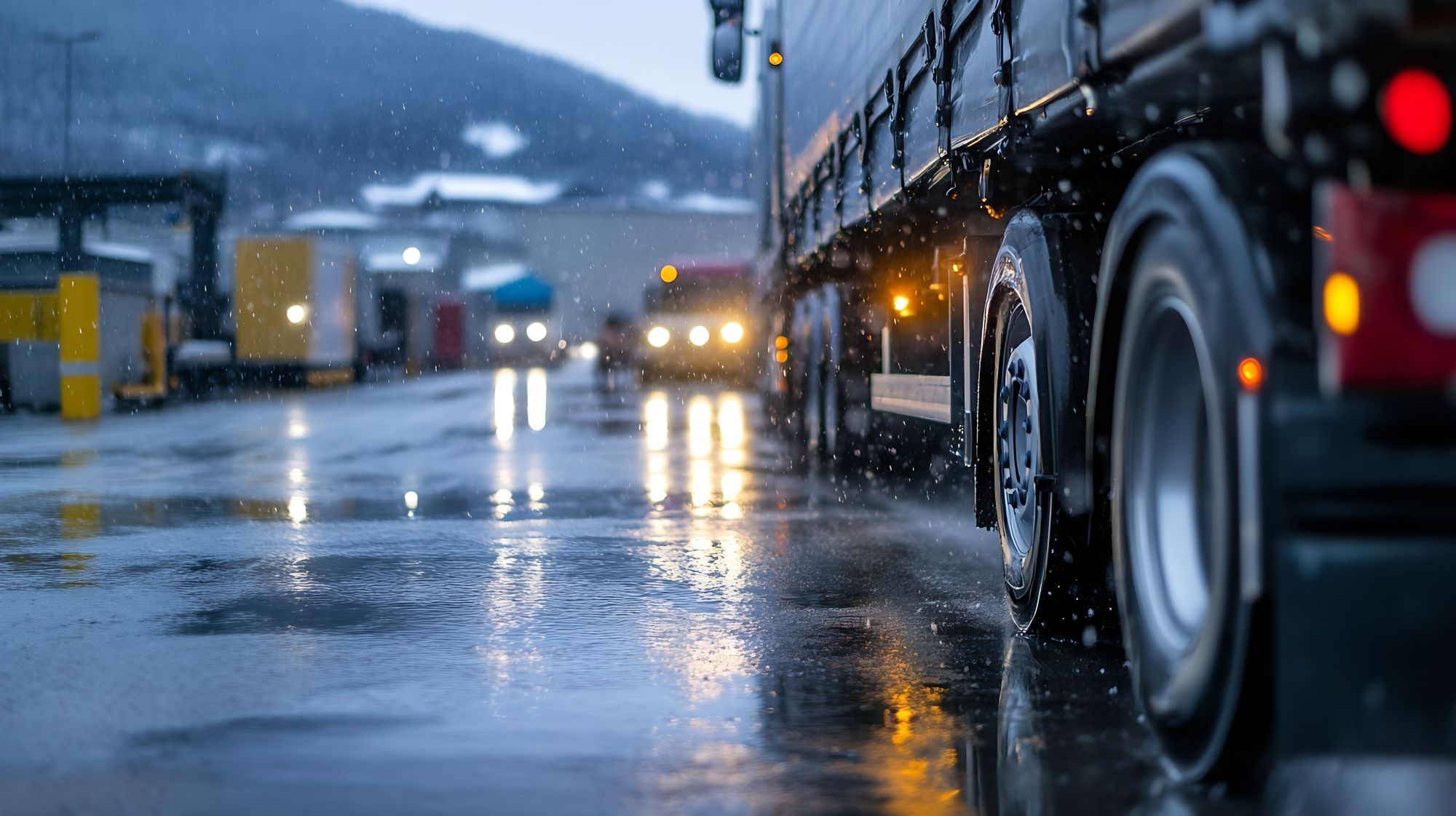
Susie Jones
Kokias pasekmes 20 mylių per valandą greičio apribojimai turės automobilių parkams?
Sukurta: 16-04-2025
•
Atnaujinta: 16-04-2025
2023 m. 188 sunkiasvorės krovininės transporto priemonės dalyvavo susidūrimuose, per kuriuos žuvo žmonės, t. y., palyginti su 2022 m., šis skaičius sumažėjo, tačiau vis tiek kelia nerimą. Šie eismo įvykiai galėjo įvykti dėl kelių veiksnių, pavyzdžiui, vairuotojo nuovargio, prastos transporto priemonės techninės priežiūros, oro sąlygų ar kitų eismo dalyvių veiksmų. Tačiau kelių eismo saugumo labdaros organizacijos "Brake" duomenys rodo, kad 58 % su kelių eismo įvykiu susijusių mirtinų atvejų greitis buvo nurodytas kaip kelių eismo saugumo veiksnys. Šiame tinklaraštyje nagrinėsime, kaip 20 mylių per valandą greičio apribojimų įvedimas galėtų paveikti automobilių parko veiklą ir sumažinti žuvusiųjų skaičių.
Kur įvyksta sunkiasvorių sunkvežimių avarijos?
Remiantis EROS, tik 10 % sunkiasvorių sunkvežimių susidūrimų įvyko greitkelyje - kiti 90 % dažniau įvyksta miesto ar kaimo keliuose. Kaimo keliuose sunkvežimių vairuotojams tenka susidurti su siauromis erdvėmis, staigiais posūkiais ir sąveika su pažeidžiamais eismo dalyviais, tokiais kaip dviratininkai ir pėstieji, todėl padidėja eismo įvykių tikimybė. Miestų teritorijose sunkvežimių vairuotojams kyla didesnė rizika dėl tankesnio eismo, dažnų sustojimų, pėsčiųjų aktyvumo ir sudėtingo kelių išsidėstymo - kartu su nenuspėjamumu miestų keliai sunkvežimių vairuotojams kelia didesnį pavojų.
20 mylių per valandą zonų poveikis.
Velso vyriausybės paskelbti duomenys rodo, kad 2024 m., palyginti su tuo pačiu laikotarpiu 2023 m., kol miestuose nebuvo įvestas 20 mylių per valandą greičio apribojimas, miestų keliuose žuvo 100 žmonių mažiau.
Šią schemą remia tokios organizacijos kaip "Brake" ir "Cycling UK", o dabar automobilių parko valdymo specialistai FleetCheck ragina krovinių vežimo įmones prisidėti prie šios schemos. Jie teigia, kad perėjimas nuo 30 iki 20 mylių per valandą turės minimalų poveikį transporto priemonių parko efektyvumui, ir tvirtina, kad tai kasmet padės išsaugoti žmonių gyvybes.

Ką transporto priemonių parkai ir vairuotojai mano apie 20 mylių per valandą greičio apribojimą?
"FleetCheck" duomenimis, krovinių vežėjai šią iniciatyvą vertina nevienareikšmiškai. Kai kurie pokyčius vertino kaip trukdžius efektyvumui, teigdami, kad mažesni greičio apribojimai gali priversti kai kuriuos transporto parkus sumažinti pristatymų, kuriuos jie gali atlikti per tam tikrą laikotarpį, skaičių.
Vairuotojai SNAP socialinės žiniasklaidos puslapiuose išreiškė tvirtą požiūrį į šį pasiūlymą. Vienas vairuotojas komentavo:
"Kas parems daugiau 20 mylių per valandą zonų? Problema yra visas vairavimo standartas. Nuo to laiko, kai baigėme uždarymo režimą, vairavimo standartas yra velniškai blogas, įskaitant lengvuosius automobilius, mikroautobusus ir sunkvežimius."
Socialiniuose tinkluose nuotaikos išliko tokios pačios - daugelis nepritarė pakeitimui.
Daugiau 20 mylių per valandą zonų nauda.
Sumažinto greičio zonos sunkvežimių vairuotojams teikia keletą privalumų.
Mažesnis greitis pagerina reakcijos laiką ir sutrumpina stabdymo kelią, todėl lengviau išvengti susidūrimo, ypač miestuose.
Tikėtina, kad sunkvežimiai mažiau dėvisi, jei greitis yra mažesnis.
Kliūtys, su kuriomis gali susidurti automobilių parko įmonės.
Kaip minėta, kai kurios transporto priemonių parko bendrovės nerimauja, kad dėl mažesnio greičio apribojimų gali sumažėti pristatymų, kuriuos jos galėtų atlikti per tam tikrą laikotarpį, skaičius. Transporto priemonių parkai taip pat galėtų susidurti su toliau išvardytais sunkumais:
ilgėja kelionės laikas: tai turi įtakos laiku pristatomiems kroviniams, daro įtaką tvarkaraščiams ir klientų lūkesčiams.
Maršrutų planavimas: bendrovėms gali tekti koreguoti maršrutus atsižvelgiant į lėtesnį greitį.
Atitiktis reikalavimams: labai svarbu investuoti į papildomus vairuotojų mokymus, kad būtų užtikrintas naujų greičio apribojimų laikymasis.
Nors šios problemos gali kelti papildomų iššūkių automobilių parko bendrovėms, daugelį jų galima valdyti aktyviai. Daugelis teigia, kad ilgalaikė saugos nauda nusveria kliūtis.

Skaičiai kalba patys už save.
Per peržiūrėtą kampaniją pavadinimu [Pavojingi greitkeliai] (https://snapacc.com/hazardous-highways/) SNAP nustatė pavojingiausias GB vietas. Gilinomės giliau ir išsiaiškinome, kuriems keliams būtų naudinga sumažinti leistiną greitį.
SNAP nustatė, kad pavojingiausi keliai yra pietryčių šalyse. Kente yra pavojingiausi keliai Didžiojoje Britanijoje, todėl siūloma iki 2050 m. Kento greitkelių tinkle nustatyti nulinį žuvusiųjų keliuose skaičių. Kurie keliai kelia didžiausią susirūpinimą?
A254: trumpas, vos keturias mylias besitęsiantis kelias, tačiau 2018 m. buvo pripažintas rizikingiausiu Didžiosios Britanijos keliu. Ataskaitoje išskirtas A254 kelio ruožas nuo A28 sankryžos ties Margeitu iki sankryžos su A255 ties Ramsgeitu. Šiame ruože leistinas greitis svyruoja nuo 30 iki 40 mylių per valandą - dėl užstatytų teritorijų ir intensyvaus eismo srauto iš Doverio uosto šis kelias yra ypač pavojingas dviratininkams, pėstiesiems ir kitiems eismo dalyviams. Ar šiame kelio ruože galėtų būti taikomi mažesni greičio apribojimai?
A252: A252, garsėjantis dideliu avarijų skaičiumi, tęsiasi 8,7 mylios. 2020 m. pradėti darbai, kuriais siekiama sumažinti eismo įvykių skaičių ir jų sunkumą. 2020 m. šiame ruože, be kitų pakeitimų, greitis sumažintas nuo 60 iki 50 mylių per valandą, išskyrus tuos ruožus, kuriuose galioja mažesni apribojimai. Tačiau ar to pakanka, kad šis kelias atsikratytų vieno blogiausių Didžiojoje Britanijoje reputacijos?
Sąrašo viršuje taip pat buvo Surėjaus ir Esekso grafystės, kuriose per pastaruosius penkerius metus iš viso įvyko 30 378 eismo įvykių. Didelį eismo įvykių skaičių Surėjuje galima paaiškinti tuo, kad jame yra apgyvendintų miestų ir kaimo kelių derinys. Dėl jo artumo prie Londono ir pagrindinių greitkelių įvyko daugiau susidūrimų.
M25: Dar vadinamas Londono žiediniu greitkeliu, M25 yra vienas judriausių Didžiosios Britanijos kelių ir antras pagal ilgį žiedinis kelias Europoje. Nuo 2007 iki 2016 m. užregistruoti 7 673 eismo įvykiai ir 80 žuvusiųjų. Kadangi tai yra itin svarbus greitkelis, greičio reguliavimas iki 20 mylių per valandą būtų absurdiškas. Tačiau ar M25 greitkeliui būtų naudingos riboto greičio zonos?
A3: 67 mylių ilgio A3 kelias gali būti sudėtingas dėl didelio eismo intensyvumo, greičio apribojimų ir prastos būklės ruožų.
Dažnai užduodami klausimai
Koks yra didžiausias leistinas sunkvežimių greitis?
Sunkvežimių vairuotojai privalo laikytis griežtų greičio taisyklių. Šie apribojimai nustatyti atsižvelgiant į sunkvežimio dydį, svorį ir stabdymo pajėgumą.
Vienos važiuojamosios dalies keliai: Didesnį nei 7,5 tonos sunkvežimį galima vežti ne didesniu kaip 50 mylių per valandą greičiu.
Dviejų važiuojamųjų dalių keliai: 60 mylių per valandą yra didžiausias leistinas greitis sunkvežimiams, sveriantiems daugiau kaip 7,5 tonos.
Automagistralės: Sunkvežimių vairuotojai greitkeliu negali važiuoti didesniu nei 60 km/val. greičiu.
Greičio ribojimo taisyklės Jungtinėje Karalystėje Jungtinėje Karalystėje visuose sunkvežimiuose turi būti įrengti greičio ribotuvai, ribojantys didžiausią galimą transporto priemonės greitį.
Teisiniai reikalavimai Jungtinėje Karalystėje: Visuose sunkvežimiuose, sveriančiuose daugiau kaip 3,5 tonos, turi būti nustatytas 56 mylių per valandą greičio ribotuvas.
Kaip jie veikia: Greičio ribotuvai riboja degalų tiekimą į variklį, kai transporto priemonė pasiekia nustatytą greitį - taip užtikrinama, kad vairuotojai negalėtų viršyti nustatytos ribos.
Ar privačiam sunkvežimiui reikalingas greičio ribotuvas?
Privačiam sunkvežimiui greičio ribotuvo nereikia, nebent jis naudojamas komerciniais tikslais. Jei jūsų transporto priemonei nereikia greičio ribotuvo, turite deklaruoti, kad jai nereikia greičio ribotuvo, kai atliekate techninę apžiūrą, užpildydami [greičio ribotuvo deklaracijos formą] (https://www.gov.uk/government/publications/hgv-speed-limiter-exemption-declaration-form).



